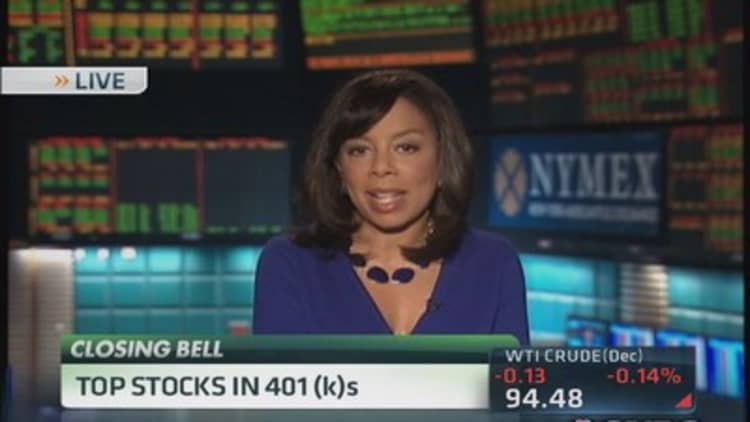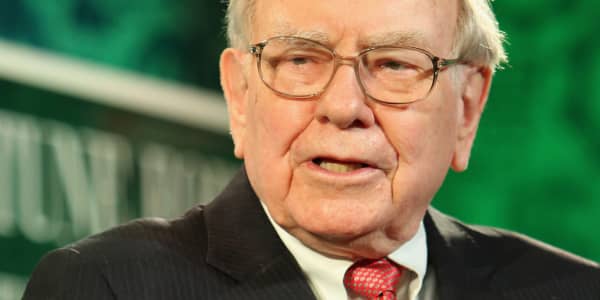Puerto Rico, sandwiched between the Dominican Republic and the U.S. Virgin Islands, is small, but its municipal-bond market impact could be huge as it faces a potential default.
Puerto Rico is $70 billion in debt; has $37 billion of unfunded pension liabilities, an unemployment rate of nearly 14 percent, and a population of just 3.6 million, which has been on the decline as people and corporations leave the cash-strapped island.
(Read more: Puerto Rico: Your money is safe with us, investors)
So what's it to U.S. investors? Even if you do not own the debt outright, you could still be passively invested in it. In fact, Puerto Rico shows up in about 75 percent of all muni-bond mutual funds, according to research firm Morningstar. The problem: It's not obvious to muni-bond fund investors. Morningstar tracks about 180 funds in total with weightings of 5 percent or more in the territory's bonds.
What makes the debt so attractive? For one, some bonds have hefty payouts, yielding more than 11 percent. That is sizable interest in the current low-yield environment. Also appealing is the island's triple tax-exempt status; as an investor, you do not pay federal, state, or local taxes on any interest earned.
"Puerto Rico has an extremely strong willingness to pay, very strong legal protections on both general obligation [GO] debt and revenue [COFINA] debt, and it has made progress toward fixing some of the fiscal problems," said Daniel Loughran, senior portfolio manager at OppenheimerFunds. His firm has 20 mutual funds with varying levels of exposure to Puerto Rico.
(Read more: The most widely held stocks in 401(k) plans)
Only those clients that can tolerate the highest degree of risk should be looking at Puerto Rico.Jeff TimlinPartner, Sage Advisory
Risky destination
Despite the benefits, there are serious risks that have caused investors to sell their bonds in recent weeks on fears they will not get paid back. The 20 funds with the most exposure to Puerto Rico debt lost $1.9 billion in assets last quarter, and preliminary data from Morningstar points to even more outflows in October.
To be sure, muni funds across the board have taken a hit this year—though not as severely as those exposed to Puerto Rico—amid fears that the Federal Reserve will scale back its $85-billion-a-month bond-buying program. Muni funds saw record redemptions of $28.6 billion last quarter, according to Morningstar.
(Read more: The new retirement age is ... never)
"Only those clients that can tolerate the highest degree of risk should be looking at Puerto Rico," said Jeff Timlin, a Sage Advisory partner and investment committee member. "I would not recommend to our investors that they should be jumping in." Timlin caters to the buy-and-hold investor, who is fairly risk-averse.
For hedge funds, however, Puerto Rico is a more popular trade. "It's a good hold over the short term if you believe the Fed won't taper for a while," said Tyler Mordy, director of research and co-CIO of HAHN Investment Stewards. When the Fed slows down stimulus and interest rates start creeping higher, the value of previously issued bonds will deteriorate.
Sun exposure
If you have the stomach to snatch up Puerto Rico debt, there are three options: buying the bonds outright, getting exposure through a mutual fund or investing in an exchange-trade fund (ETF) that tracks Puerto Rico.
(Read more: The best retirement investment you can't have)
Take the Franklin Double Tax-Free Income (FPRTX), for example. The mutual fund's name does not include Puerto Rico, yet more than 60 percent of its holdings are in Puerto Rico bonds. It is the closest option to a pure play on the island's debt and has an SEC yield of 5.01 percent.
This kind of investing, while attractive to yield seekers, is not for the squeamish: FPRTX dropped 30 percent from May to September on dual concerns of rising rates, in general, and worries over the sustainability of the territory's debt, in particular. Oppenheimer Rochester VA Municipal (ORVAX) and Oppenheimer Rochester NC Municipal (OPNCX) also have weightings of greater than 30 percent.
Elsewhere, 23 ETFs have exposure to the island's debt, but only four of those have weightings of 5 percent or more—a much smaller figure compared with the 180 mutual funds with holdings of at least 5 percent. The PowerShares Insured New York Municipal Bond ETF (PZT) and the PowerShares Insured California Municipal Bond ETF (PWZ) have the largest weightings at 17 percent and 14 percent, respectively. Since the start of May, PZT has tumbled about 10 percent, while PWZ is down 8 percent.

Municipals costs
When it comes to cost, ETFs are usually less expensive than mutual funds. For instance, PZT and PWZ have expense ratios of just 0.28 percent...less than half that of FPRTX's 0.66 percent ratio.
If those funds are not appealing, there is another option in the pipeline: Van Eck's Market Vectors Puerto Rico Municipal Index ETF, which tracks the Barclays Custom Puerto Rico Municipal Composite Index. According to the registration statement, the ETF will be at least 80 percent invested in tax-free debt sold by Puerto Rico, Guam, the Virgin Islands, American Samoa and the Northern Marian Islands. It is practically a pure play on Puerto Rico's debt and is set to debut later this year or in 2014.
(Read more: Where even Fidelity, Vanguard fail)
The biggest questions for the country and investors are whether the island will be able to borrow more money, balance its budget, and slowly claw its way back to growth; it has been mired in recession since 2006.
A possible default and/or broad-sweeping ratings downgrades could cripple the government's ability to raise more money. Most of Puerto Rico's bonds trade one notch above junk status; however, ratings agencies have recently downgraded some COFINA debt, which is backed by revenue from Puerto Rico sales tax.
—By CNBC's Kristen Scholer. Follow her on twitter @KristenScholer





